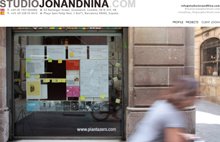Illuminating space
Never have architecture and film been so magically paired as in Cinema Paradiso a film set in a small Sicilian town, that celebrates the magic of cinema. When half the town is refused entrance into the cinema, they gather in the square outside, shouting and pounding on the doors. Alfredo, the projectionist gently turns a piece of glass and in doing so steals a tiny portion of the projected light that is meant for inside the cinema. As he moves the glass, our gaze turns to follow the film as it dances across the small projection room. It stretches fluidly across cornices and bends around corners. As it lands on a smooth wall, it falls into focus and two characters appear out of its misty brightness. They move inside the frame of light and with it they slide over the edges of the room. They linger momentarily on the edge of an open window. They glide on, disappearing, before settling on the façade of a building outside. The mob quieten, transfixed by the magic of the moving image. The small square fills up. People sit uncomfortably close to each other, perching on every doorstep and stone they can find. All heads are tilted upwards, all eyes gaze in the same direction. The familiar square is transformed into a sea of heads.
The projection of a film onto a building has the power to transform the everyday into the magical. It captivates audiences and to silences mobs. Every cornice is accentuated, every crack a prop in the movie. The façade glows a flashing rhythmic light onto its watchers. It transcends its brick and mortar existence and becomes a window to myriad worlds. This scene in ‘Cinema Paradiso’ reveals various ways in which cinema and architecture inform and accentuate each other.
The scene is choreographed to perfection. Whilst the image glides along the edges of the room, the camera moves perfectly in time, with Ennio Morricone’s soundtrack accompanying the two and culminating at the moment where the film is revealed in the square outside. Here film is used to illuminate the magic of film. It is able to capture sequences through time and space and imposes a point of view. Our eyes follow the movement of the projection because the camera does. The director can be selective about what to put in the frame, how to reveal it, what to focus on and when to move. To the envy of the architect, the filmmaker has control over the audience’s eyes. An experience is crafted in a way that architecture can only dream of. Architects are able to enclose space, play with light, create shadows and manipulate the sound and feeling of a place. However they can only speculate on the ways in which it will be experienced. Film can craft an experience.
In ‘Cinema Paradiso’ architecture forms part of this crafted experience. It is defined by the movement of light and captured by the moving camera. The light stretches, curves, shrinks, grows, focuses and blurs as it traces out the space. We experience space in a new way. The light traces out the space as hands would, by touching it. The shadows created by the projected beam allow us to feel the textures that it skims over. Light jumps from one surface to the next regardless of the distance between them. The traversed space is expressed by the projection’s change in size. The moving film explores the built world. It illuminates its edges.





